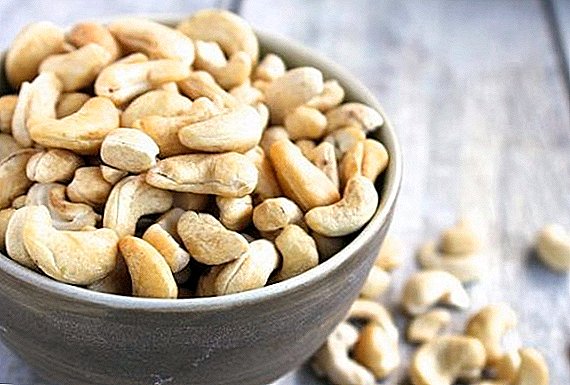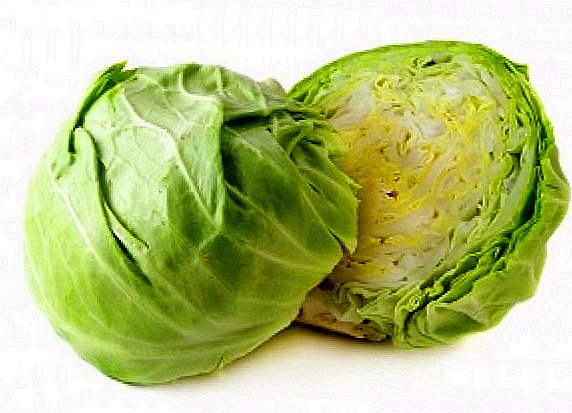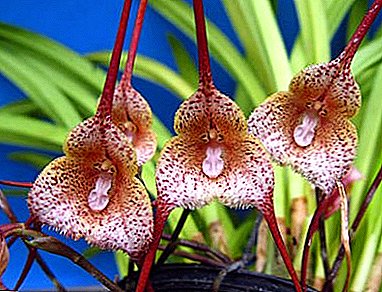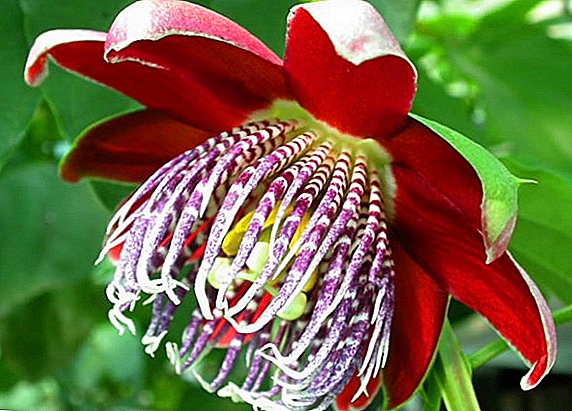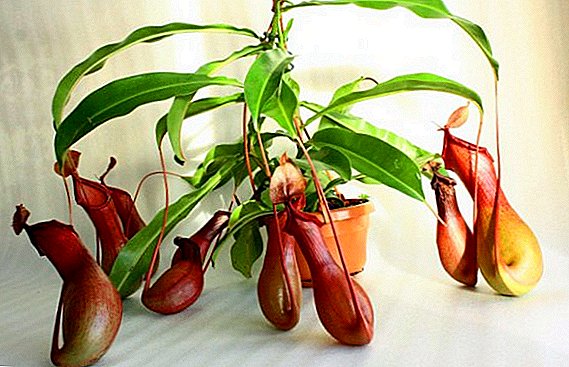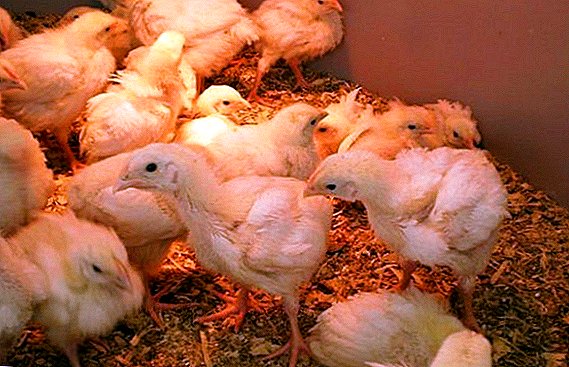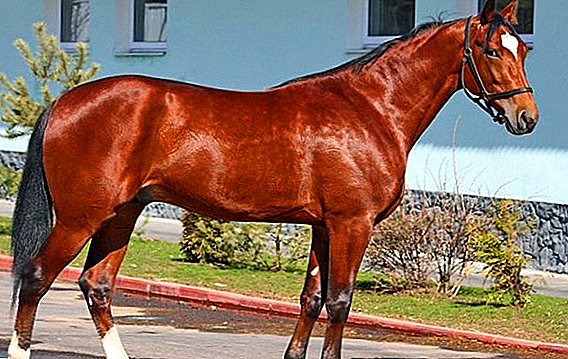 In the world there are 4 breeds of pure trotting horses, distinguished by high speed and agility when running trot.
In the world there are 4 breeds of pure trotting horses, distinguished by high speed and agility when running trot.
About one of them, the youngest - Russian trotter - will be discussed in this article.
Historical data
Russian trotters - the result of crossing American and Orlov trotting horses. Breeding them began at the dawn of the 20th century and was carried out with the aim of increasing playfulness in Oryol horses. The breed was finally approved in 1949.  As a result, the Russian trotter received the necessary agility from the American ancestors, and from the Orlovskiks - a strong build and well-developed muscles.
As a result, the Russian trotter received the necessary agility from the American ancestors, and from the Orlovskiks - a strong build and well-developed muscles.
Did you know? The largest horse in the world with a growth of 2.2 m and a weight of 1.52 tons is considered to be a representative of the Shire breed, named Sampson. The smallest horse is American miniature. A representative of this breed named Little Pampkin with a height of 35.5 cm and a weight of 9 kg hit the pages of the Guinness Book of Records.
Breed description
The Russian trotter breed includes valuable breeding and lightweight horse sports horses. They are used to improve sledding breeds and in equestrian sports. This breed has several subspecies, the most popular among which are the overseas miracle, guild horse, Terek horse, and trembling.
Exterior, weight, height
As a rule, representatives of Russian trotters have a correct and harmonious physique. However, various variations are possible.
Usually these horses have these characteristics:
- weight - 450 kg (at 3 months of age);
- height at withers - 154-165 cm;
- body length - 160 cm - for mares, 162 - cm for stallions;
- head - narrow, with a straight profile, well built, with a wide forehead;
- ears - small, elongated, mobile;
- eyes - dark color, expressive;
- neck - dry, medium length, strong, even, proportional;
- back - long, inclined;
- chest - well developed, convex, with a girth of about 184 cm;
- limbs - medium, dry, muscular. Front - slightly turned inside, with rounded hooves, rear - angular.

Suits
The most common suit is bay. There are also trotters with dark-bay, black, red, brown, gray color.
Did you know? The most intelligent horse in the world is a gelding named Lukas. He knew how to smile, count to 20, distinguish figures and figures, say "yes" and "no" with nods of his head, bring objects like a dog.
Temper and habits
Russian trotters have a calm disposition and endurance. They have courage and energy. They are obedient and docile. For this, they are valued by lovers of horseback riding, organizers of rehabilitation programs and hippotherapy sessions.
Advantages and disadvantages
The content of the Russian trotter has both advantages and disadvantages.
The advantages of this breed are:
- Versatility - the ability to use in exhibitions, races, in hippotherapy, as a domestic horse, a working horse.
- The possibility of using for breeding new breeds.
- Beautiful exterior.
- Calm nature.
- Endurance.
- Good adaptation in almost any climate zone.
- Increased agility - the following records belong to the Russian trotters: 1600 m race - 1 min. 58.8 seconds; at 2400 m - 3 min. 03 sec .; on 3200 m - 4 min. 06.1 seconds
- Unpretentious care.

There are few disadvantages, but they are still present:
- Concave structure of the front limbs.
- Insufficient development of the muscles of the shoulder and lower leg.
- Late maturation (although faster than the Orlov horses).
Scope of use
Russian trotters can take part in races from the age of 4, but they gain their maximum speed only by 6 years. The main direction of use - as a racehorse.
Also, the Russian horse is used to perform physical labor, for work on farms. Representatives of this peaceful breed are perfect for horse riding lessons, horse riding, hippotherapy - they help children and adults bring mental and physical abnormalities closer to normal.
They are involved in driving (horse carriage competitions). The most beautiful and frisky individuals are used to improve the qualities of other draft breeds.
To harness rocks also include such as tinker, trakens, Karachai, Frisian.
Conditions of detention and care
Like most horse breeds, the Russian horse itself is unpretentious to care. However, high-quality wool cleaning, comfortable and clean stable, and control of the state of the hoof are important conditions for the animal.
The ideal option for a horse dwelling is a stable with a separate stall, an open area and an arena. Expanse is the main prerequisite for living a horse who needs to move freely. The size of the stalls must be at least 3x4 m, and better - 4 x 4, the height of the ceilings is 3.5 x 4 m.  All rooms where horses are kept must be regularly ventilated. They should be protected from drafts, in the winter - to warm. The installation of high-quality ventilation is very important. As for the temperature in the stable, in winter it should be maintained at + 8 ... +11 degrees, in the summer it should be cool - up to + 23 ... +25 degrees.
All rooms where horses are kept must be regularly ventilated. They should be protected from drafts, in the winter - to warm. The installation of high-quality ventilation is very important. As for the temperature in the stable, in winter it should be maintained at + 8 ... +11 degrees, in the summer it should be cool - up to + 23 ... +25 degrees.
Standard animal care is to keep the fur, nostrils, ears, teeth, and hooves clean. After the walk, cleaning of wool is required, dirt, sweat, and harmful substances are cleared from it. To do this, use special tools (shampoos, conditioners) and accessories (brushes, scrapers).
After an intense horse jog, a contrast shower is needed, which will help not only to clear him of sweat, but also to take fatigue from his body, to restore vigor.
Important! Water procedures of a horse can be made only in a warm season and at not too windy weather. Otherwise, bathing threatens the occurrence of colds in the animal.
Each time during the course of cleaning and bathing, the owner must check the condition of the horse’s skin for wounds, injuries, parasites. Hygienic procedures are also an excellent occasion and time to communicate with a pet.
Do not forget to monitor the condition of the ears and nostrils. Visits to the veterinarian should be regular, as they can clean them and identify problems promptly. Also, the owner of the mount should monitor the timely implementation of vaccination.  Hoof cleaning can and should be done by the owner. To do this, bend the limb and clean the dirt with a special hook. At the same time, it is necessary to inspect the hooves for damage.
Hoof cleaning can and should be done by the owner. To do this, bend the limb and clean the dirt with a special hook. At the same time, it is necessary to inspect the hooves for damage.
You must constantly monitor the health of the teeth of the animal. To do this, you should regularly - once a week - inspect the molars. It is important to show the horse once a year to a veterinarian who will professionally conduct an inspection of the oral cavity and the filing of sharp teeth.
Feeding ration and water
The diet of the horse will vary depending on the season (at different times of the year, the animal will need different vitamins and trace elements), age, sex, physical activity and other factors.
Proper operation of the gastrointestinal tract of the horse will be possible when feeding it with hay, vegetables, and grains. The menu and the amount of each ingredient are best coordinated with the veterinarian - they will depend primarily on the weight, age and sex of the horse.
The following standards are usually recommended:
- Hay (preferably leguminous) - 1.5-2 kg per day per 100 kg of live weight;
- legumes (oats, barley, corn, rye, wheat, millet, sorghum, mogar, chumizu, peas, vetch, lentils, beans) - 3-4 kg per 1 individual per day;
- bran - up to 2.5 kg per 1 individual per day;
- vegetables (carrots, apples, fodder beets, potatoes, turnips, rutabaga) - 2-4 kg per 100 kg of live weight per day.
 Also in the feed you can enter the finished feed and premixes.
Also in the feed you can enter the finished feed and premixes.An approximate daily menu for an adult horse might look like this:
- oats - 8 kg;
- corn, barley - 6 kg;
- rye, wheat - 4 kg;
- sorghum, millet - 4 kg;
- Vika, lentils - 2 kg;
- linseed meal, sunflower cake - 3.5 kg;
- hemp cake - 2.5 kg;
- cotton cake - 1.5 kg;
- wheat bran - 4 kg;
- malt sprouts - 1 kg ;.
- beer pellet dry - 3 kg;
- bard dry - 2 kg;
- dry pulp - 3 kg;
- molasses fodder - 1.5 kg;
- potatoes - 8 kg;
- fodder beet - 12 kg;
- carrots - 10 kg;
- Bard fresh - 12 liters;
- silo - 8 kg.
With the introduction of premixes may be this option:
- hay - 7 kg;
- corn - 1-2 kg;
- grass meal - 1 kg;
- treacle - 500 g;
- premix 100 g;
- salt - 50-60 g
 To feed the animal should be twice a day - in the mornings and evenings. If the horse is hot after training, then before giving her water, you need to wait at least an hour. The water should be warm, in the winter it should be heated to + 14 ... +16 degrees. Per day one individual requires up to 50 liters of fluid.
To feed the animal should be twice a day - in the mornings and evenings. If the horse is hot after training, then before giving her water, you need to wait at least an hour. The water should be warm, in the winter it should be heated to + 14 ... +16 degrees. Per day one individual requires up to 50 liters of fluid.Important! It is forbidden to overfeed a horse with cereals - this is fraught with painful death. Digestive disorders can cause any products of non-plant origin.
Thus, the Russian trotter is a lightweight horse breed, distinguished by a beautiful appearance, excellent race characteristics and unpretentious care.
Peaceful character, strong legs and fast run of a horse make him attractive for race organizers, organizers of riding courses, rehabilitation programs.
Among the mandatory measures for animal care are the cleaning of wool, hooves, vaccination, feeding and watering, and the maintenance of sanitary and hygienic standards in the stable.


